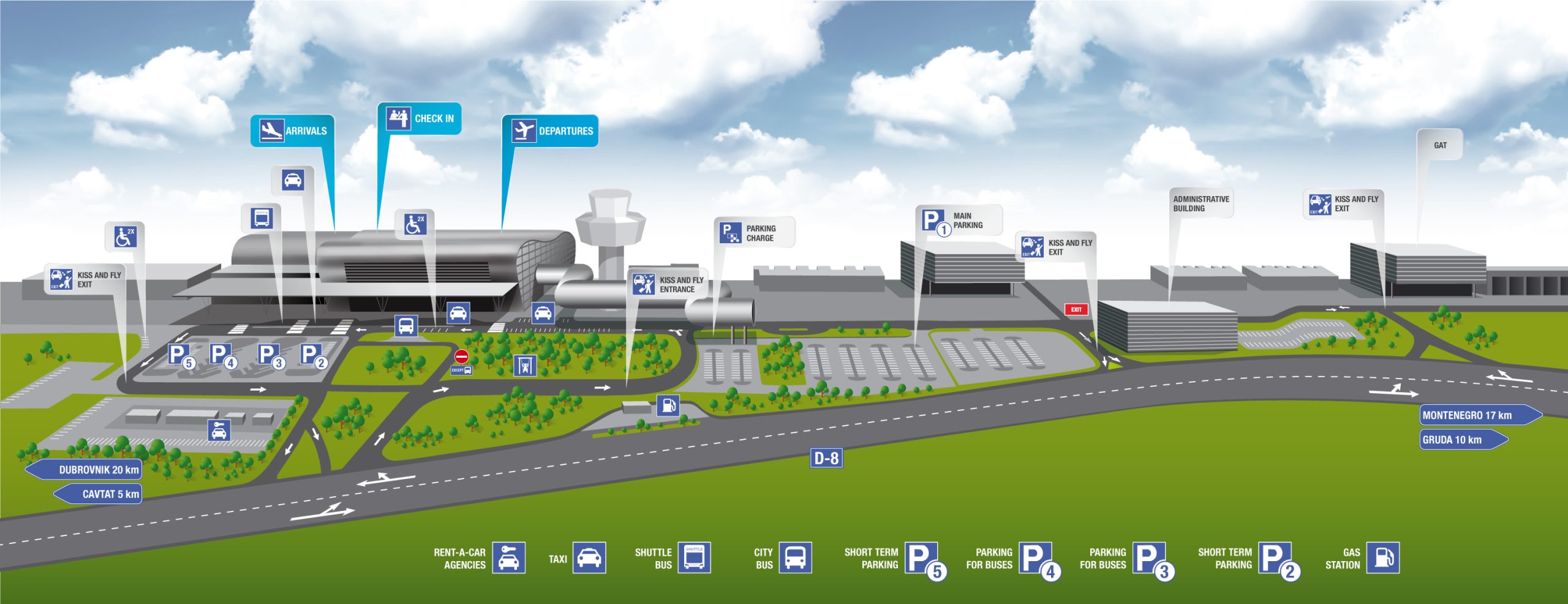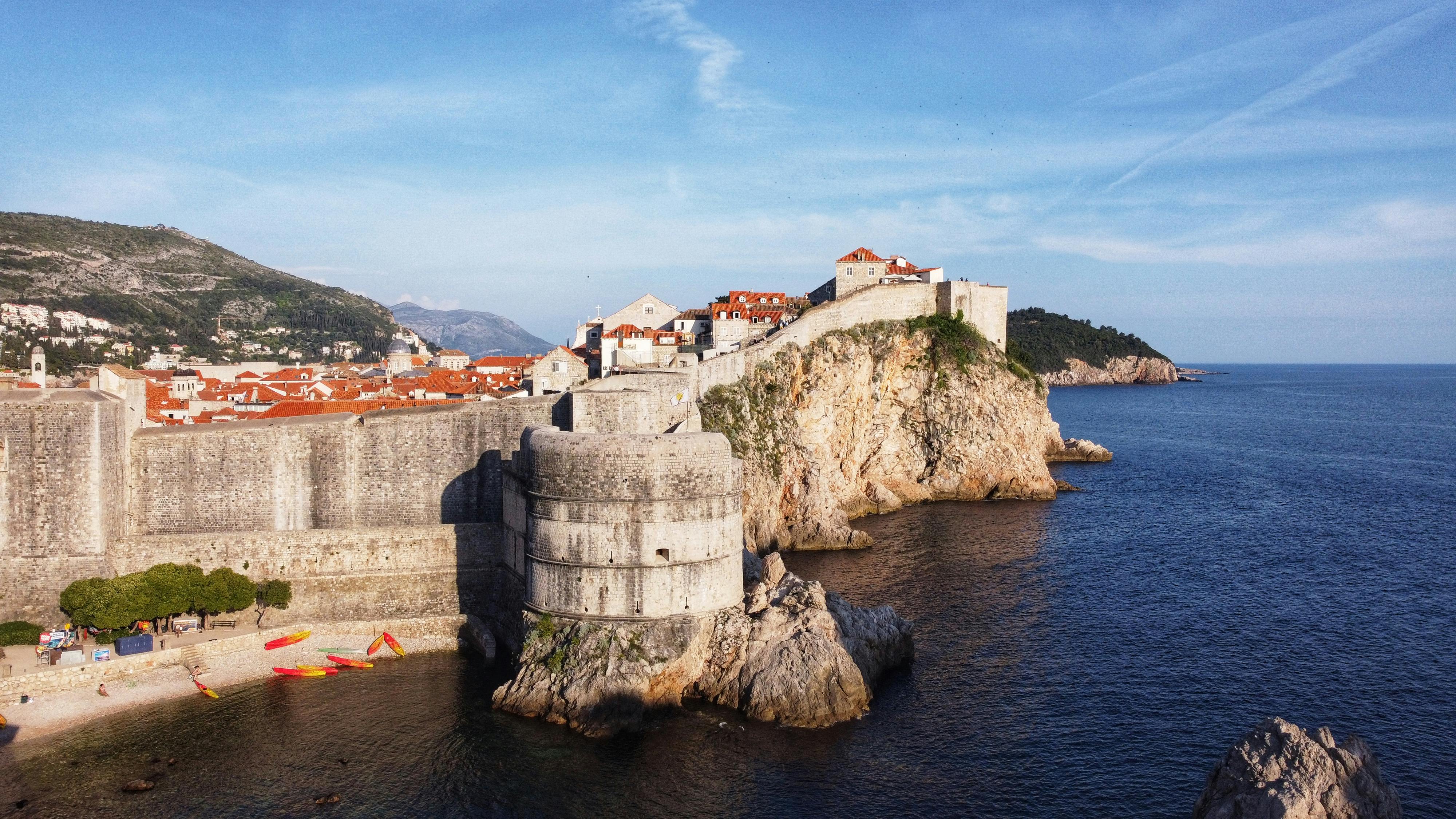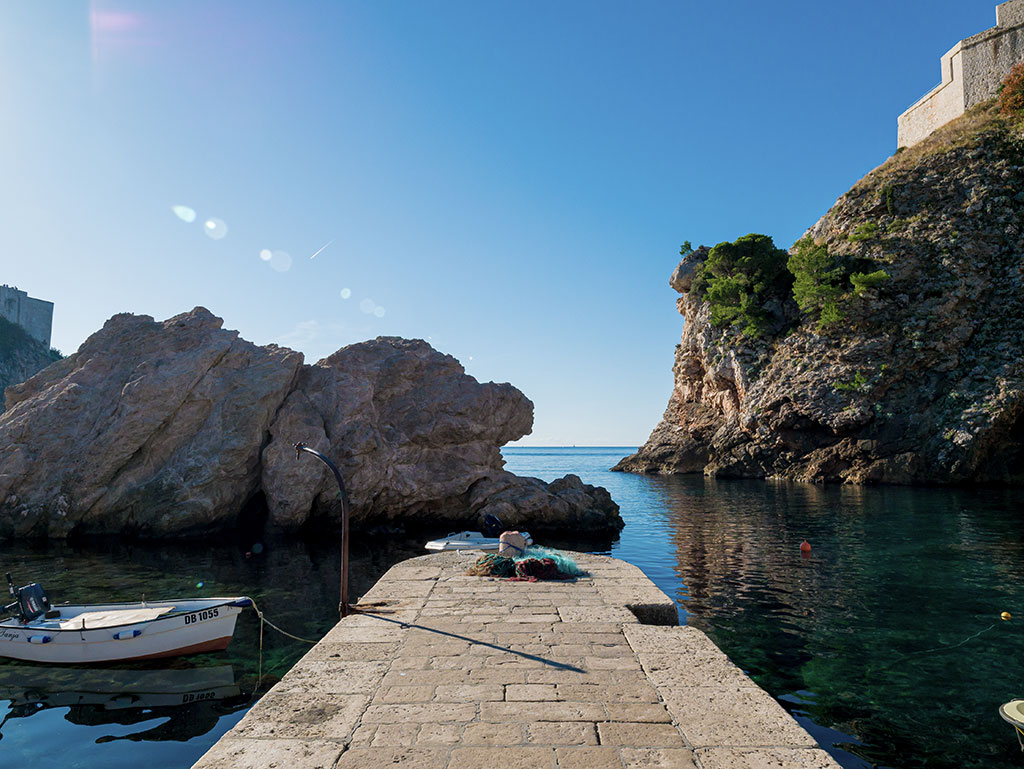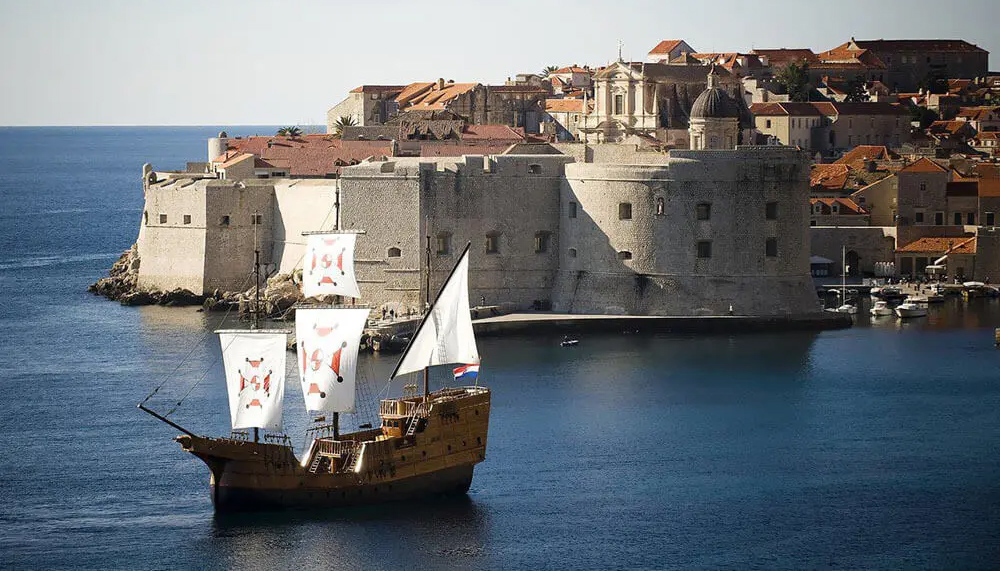TRAVEL AND STAY
ARRIVING TO DUBROVNIK
City of Dubrovnik can be reached by air from Zagreb and most of the European cities, by bus coaches from Zagreb, Rijeka and Split, by boat from the ports of Rijeka and Split, or by boat from Italy.
Since Dubrovnik is one of the southernmost cities in Croatia, the most practical way to reach it is by plane, and there is a good frequency of flights operating until the end of October. A variety of direct flights from around the Europe to Dubrovnik (DBV), especially from London, Frankfurt, Münich and Zagreb are operating throughout the week. Further details on flights are available via https://www.airport-dubrovnik.hr/en.
The DBV airport is located in Čilipi, around 20 km south of Dubrovnik. After arriving at the airport, there are several options how to reach your accommodation. You can either take the official shuttle bus, taxi, rent-a-car, Uber or Bolt.

ABOUT DUBROVNIK
Those who seek paradise on Earth must come to Dubrovnik
— George Bernard Shaw
A fusion of medieval and Mediterranean influences creates a captivating blend, with majestic stone fortresses emerging from the shimmering waters of the Adriatic Sea – a perfect description of the city of Dubrovnik.
Historically, Dubrovnik stood as a City-Republic, ranking among the Mediterranean’s most famous cultural and economic hubs, sharing the spotlight with Venice. In more recent times, it has evolved into a center of modern cultural and tourist events. Dubrovnik now hosts a multitude of summer festivals, showcasing top-notch musical and theatrical performances on an international scale. These values have turned Dubrovnik into a place that offers a rich selection of various experiences and excitement, but also a complete holiday in a quiet and calming, mild Mediterranean ambiance and wonderful seaside landscapes.

The walls of Dubrovnik are a remarkably well-preserved complex of public and private, sacral and secular buildings representing all periods of the City’s history, beginning with its establishment in the 7th century. Since 1979 Dubrovnik has been in the register of UNESCO as a protected World heritage. Particular mention should be made of the city’s main street in the old historical center – Stradun, Rector’s Palace, St. Blaise’s Church, Cathedral, three large monasteries, Customs Office, and the City Hall.
The geographical position of this region is typically Mediterranean with mild and wet winters, and hot and humid summers (2,600 hours of sunshine on average). The average air temperature is 17° C and the summer sea temperature is 21° C. There are many sunny days during the winter months. The average summer air temperature is 25° C, made pleasant by the mild ‘maestral’ wind – a messenger of good weather, while the ‘bura’ and the ‘jugo’ generally blow during the colder months.
The coastline is beautiful, dotted with bays, beaches, steep cliffs, and many forested islands. There is a great variety of flora, predominantly cypress, pine, and olive trees, as well as vineyards, lemon, and orange plantations – together with aromatic herbs and flowers, including exotic plants such as palm trees, agave, and cactus, which create a special atmosphere. For nature enthusiasts, this region boasts an authentic Mediterranean terrain, while those fond of sailing will find themselves immersed in a wonderful sea and well-equipped marinas.
Dubrovnik is not only a fascinating place to explore in its own right but it makes a great base for day trips throughout southern Dalmatia. The Dubrovnik countryside is replete with small villages that retain their folklore traditions. Further down the coast is the resort of Cavtat. Lying at the tip of Croatia, Dubrovnik is close to Mostar in Bosnia-Hercegovina and Montenegro, which make great day tours. Offshore, lie some of the most beautiful islands in the Adriatic: Mljet, Lokrum, and Elaphiti Islands. Elaphiti Islands are true jewels of Dubrovnik archipelago. The chain of islands between the Pelješac peninsula and the Lapad peninsula used to be a favorite place for summer residences of the Dubrovnik aristocrats.
Dubrovnik has a well-deserved longstanding worldwide fame that has been lasting for decades and has just been recently amplified by becoming a Hollywood love child. A good chunk of Star Wars: Episode 8 and new DiCaprio’s Robin Hood was filmed on its charming and mysterious streets. But what really made it famous inside of the games industry and movie industry circles, is the city becoming one of the main settings for the shooting of award-winning Game of Thrones HBO TV series (King’s Landing). Take a walk on its monumental historical city walls and experience it for yourself.

More information on Dubrovnik tourism can be found at: https://tzdubrovnik.hr/lang/en/index.htm
More information on CROATIA can be found at: https://croatia.hr/en-gb
ADDITIONAL INFORMATION
Payment currency in Croatia: EUR (€)
Credit cards are widely, though not universally accepted. Visa, Mastercard and Diners are accepted the most frequently; American Express is accepted less frequently. All stores and hotels accept credit cards and they are accepted in most of the restaurants as well. Not all restaurants accept credit cards. If you’re dining at a small family inn or konoba off the tourist path you should bring cash just in case.
You’ll also need to bring cash for public transport. On intercity buses, tickets can be purchased in advance and paid for by card. Local buses are mostly cash only.
Important VISA notice: As of 1 January 2023, the Schengen acquis is in full application in the Republic of Croatia as a Schengen area Member State. The visa regime of the Republic of Croatia is part of the EU acquis. As of 1 January 2023, Schengen visas (visas type A and C) and national long-term visas (visa type D) are issued in Croatian diplomatic missions and consular offices. Please visit the Ministry of Foreign and European Affairs web page for more information and details on possible VISA requirements.

